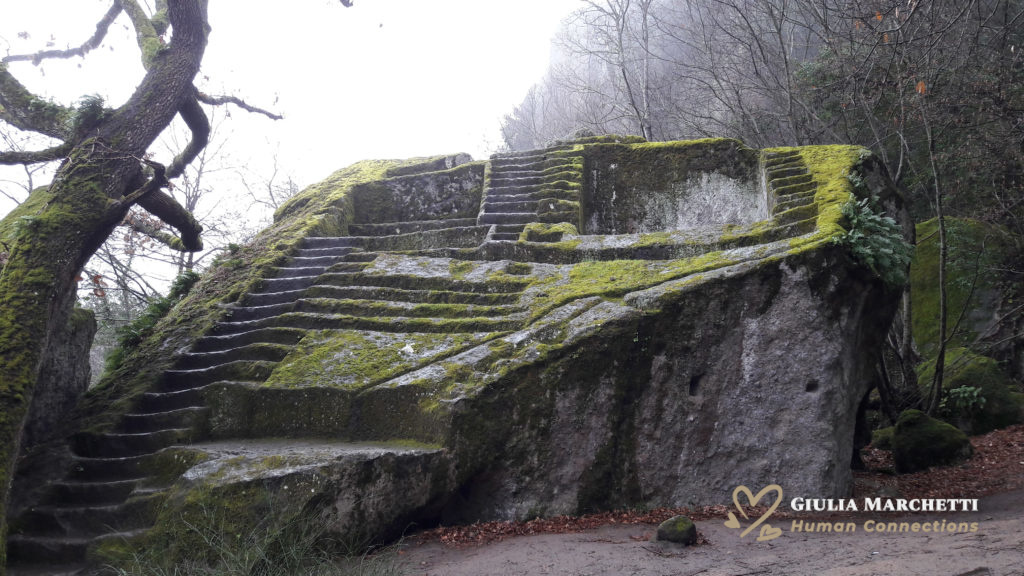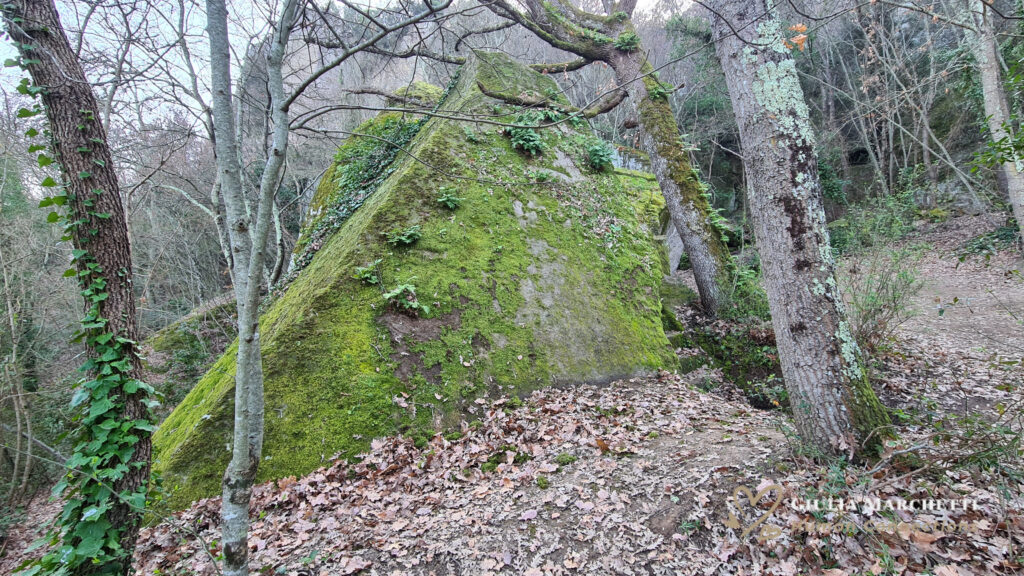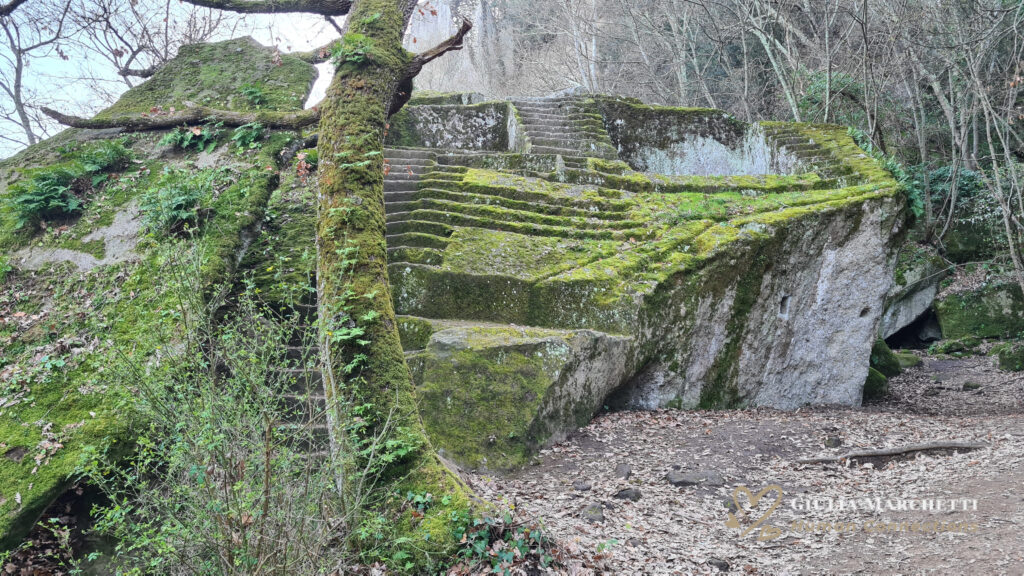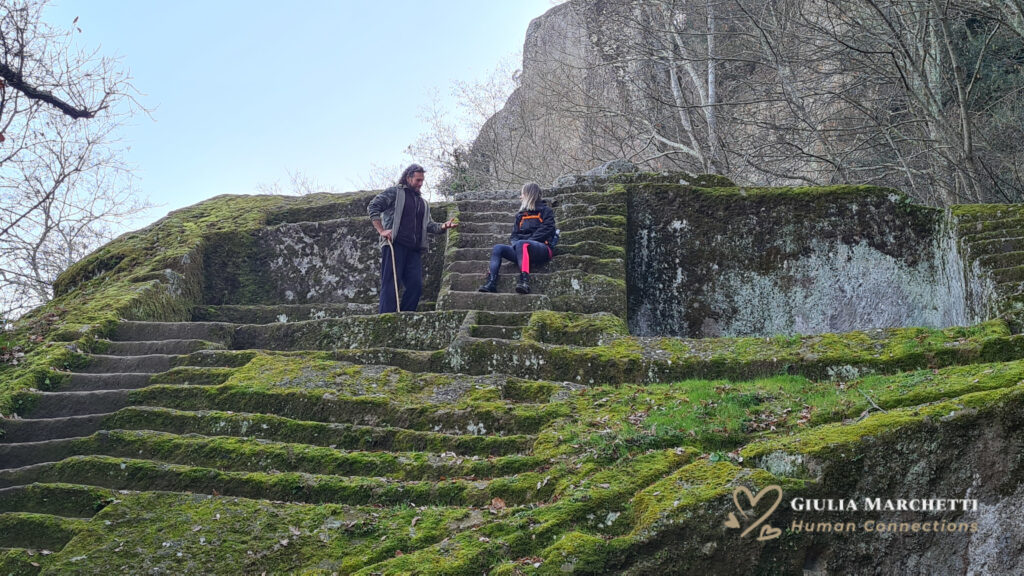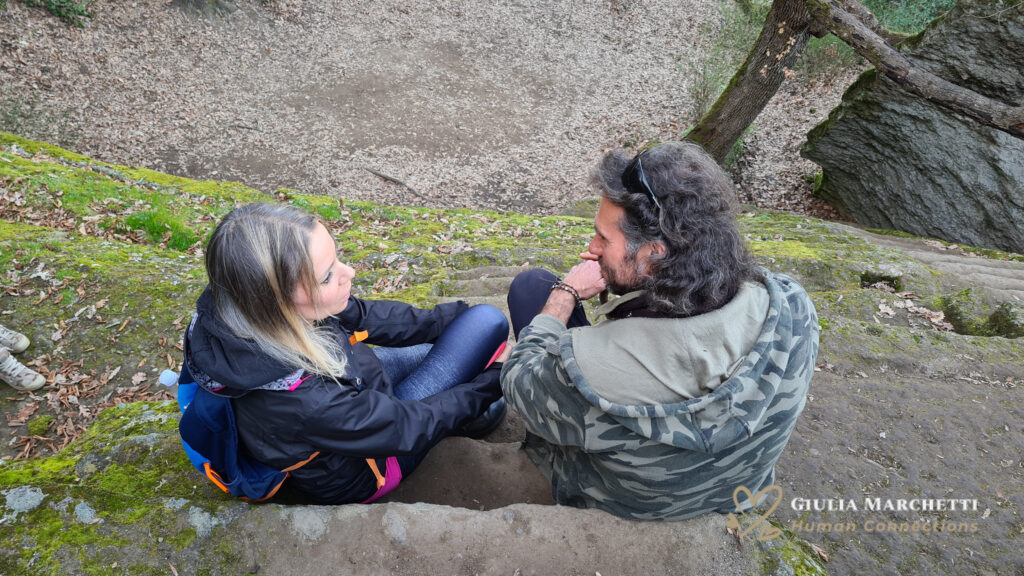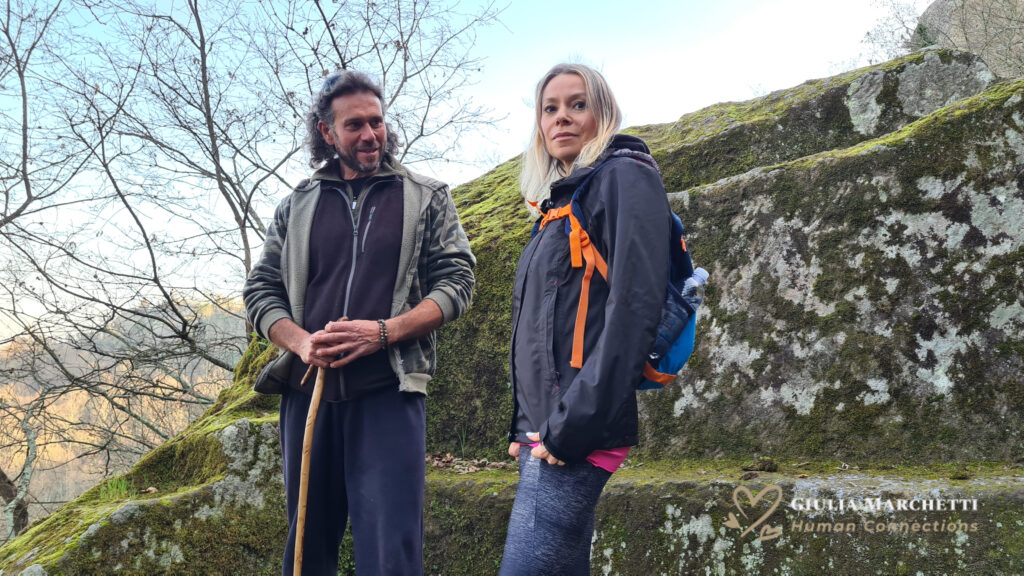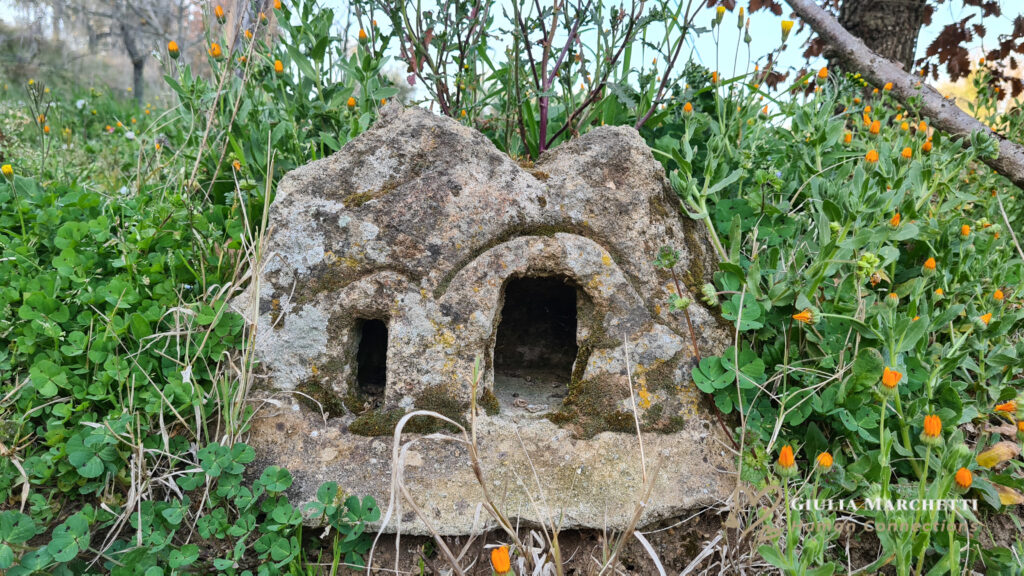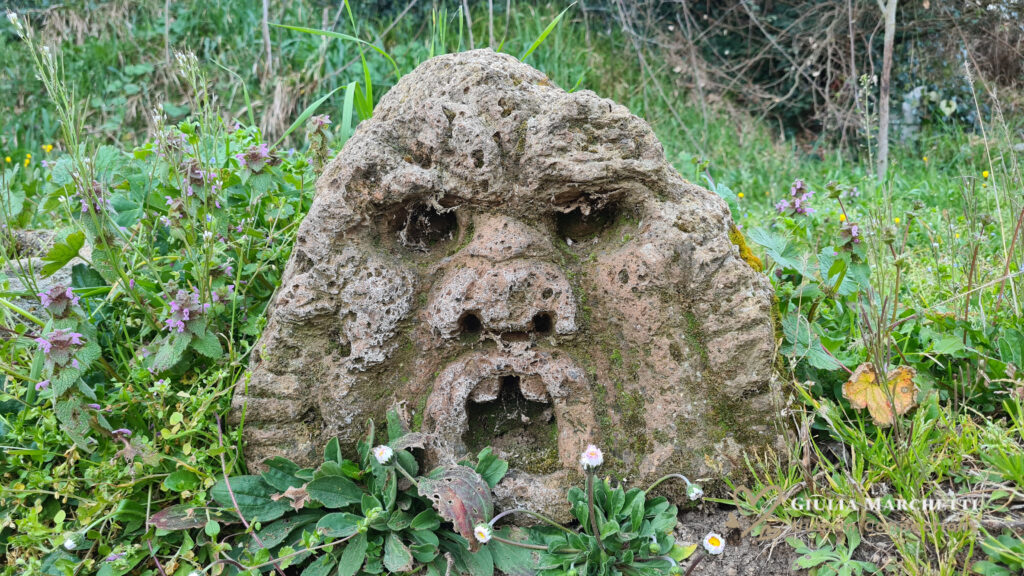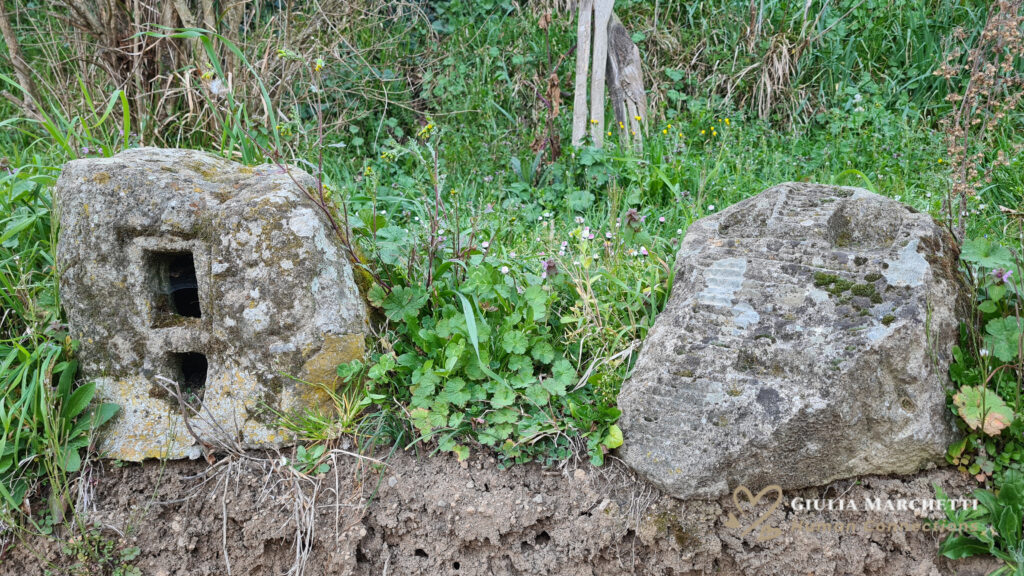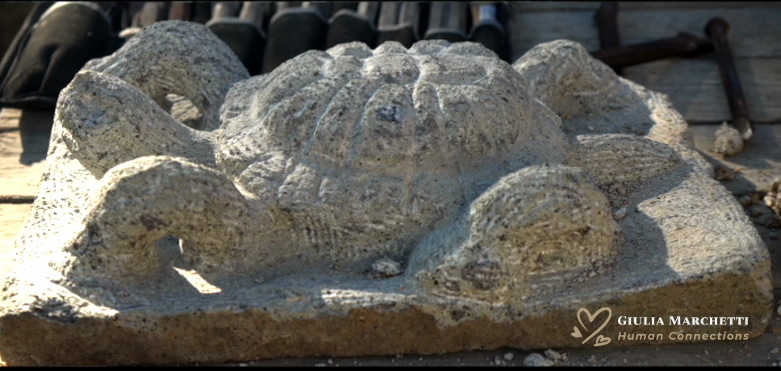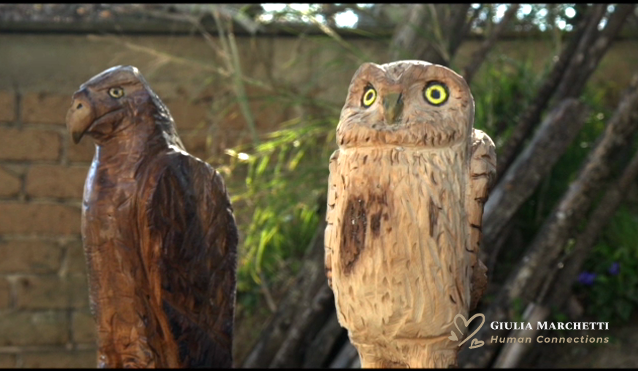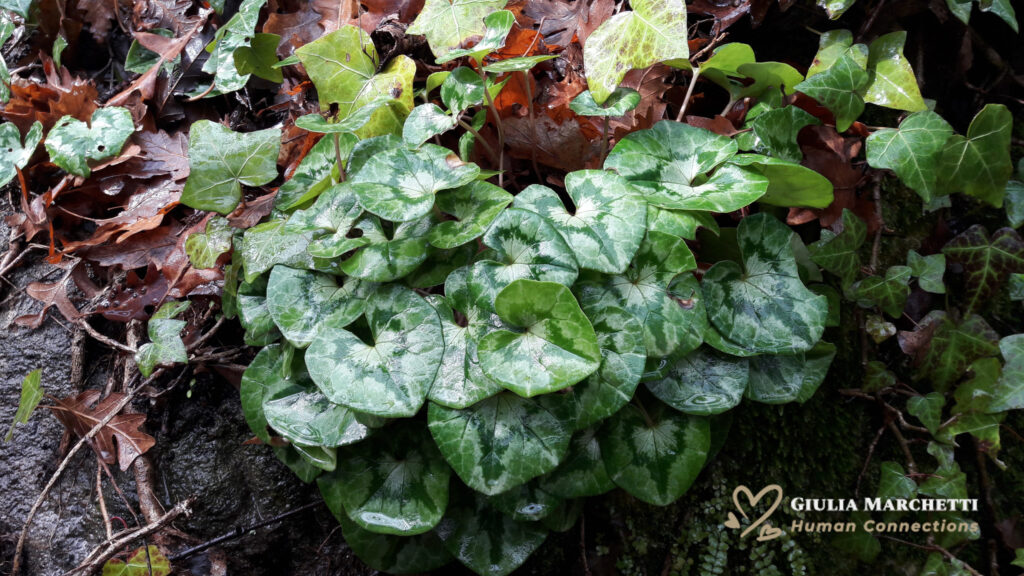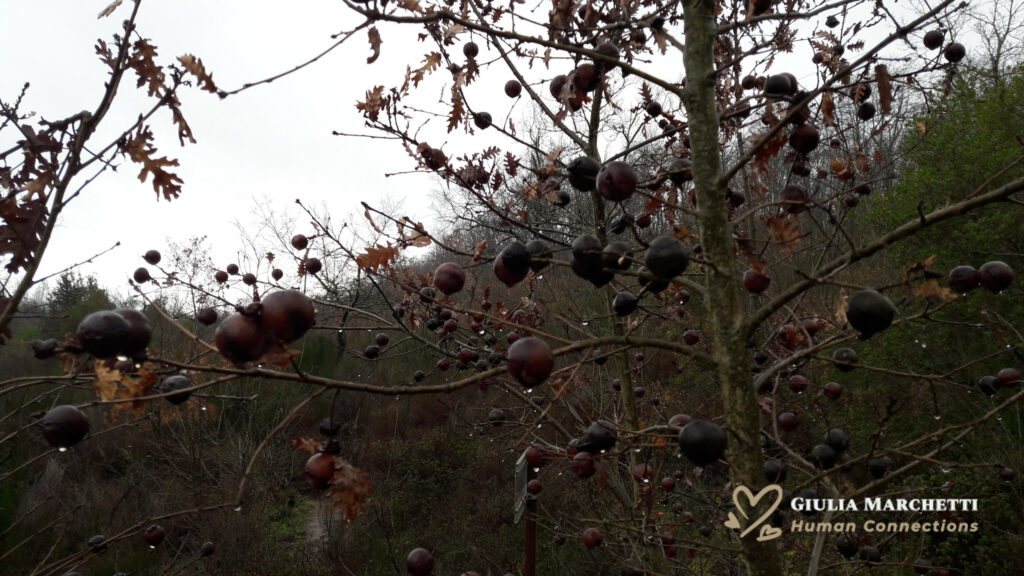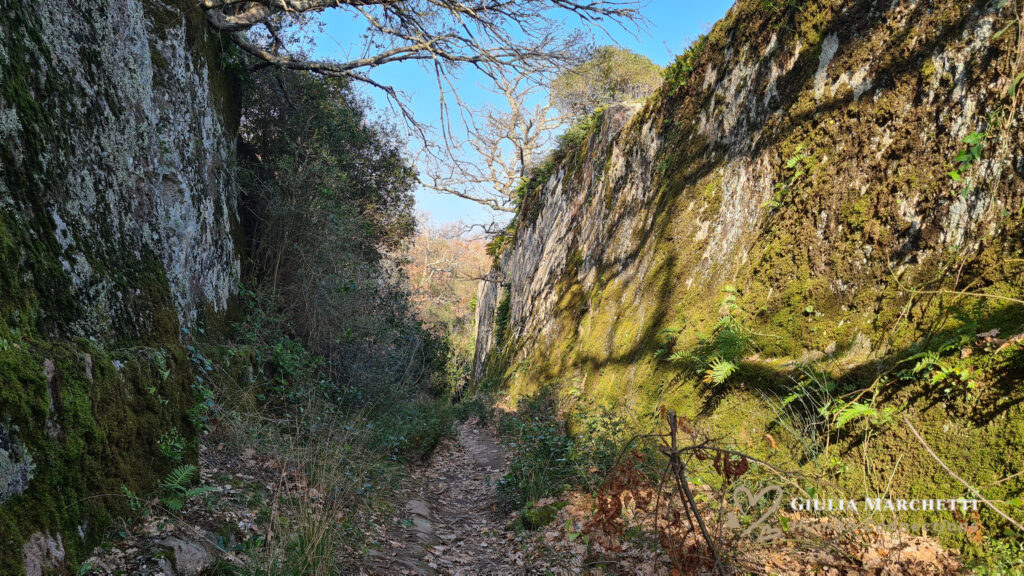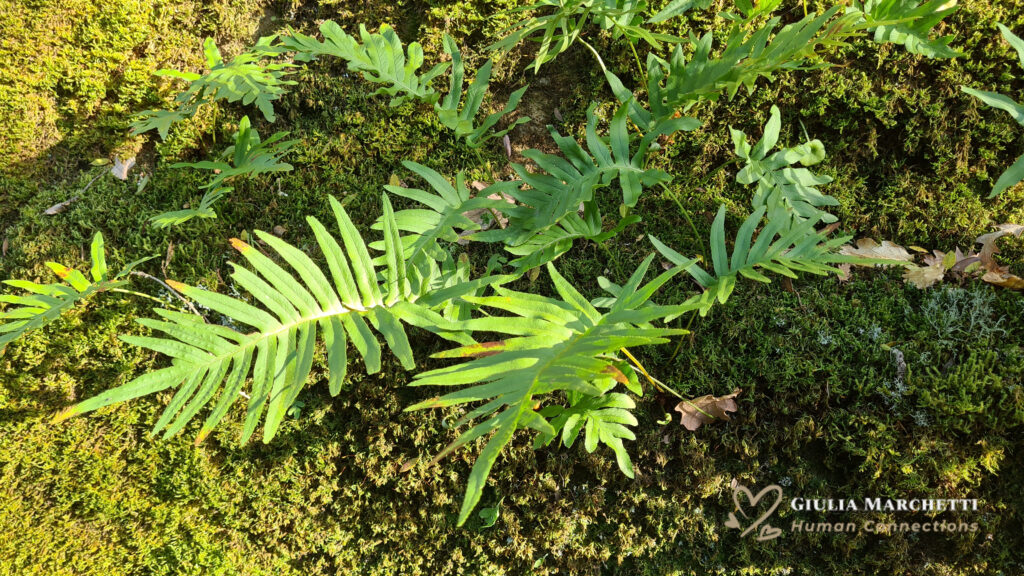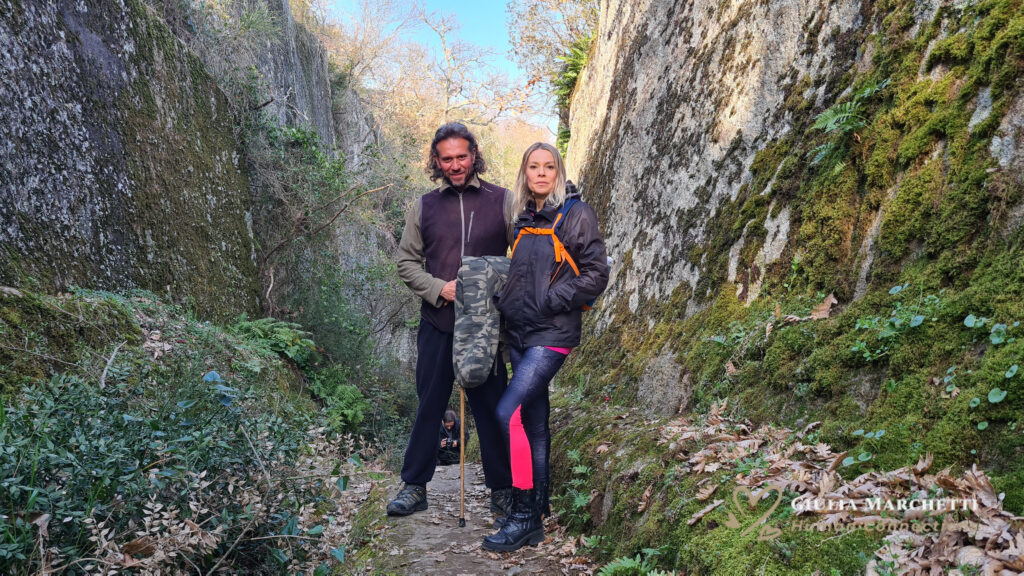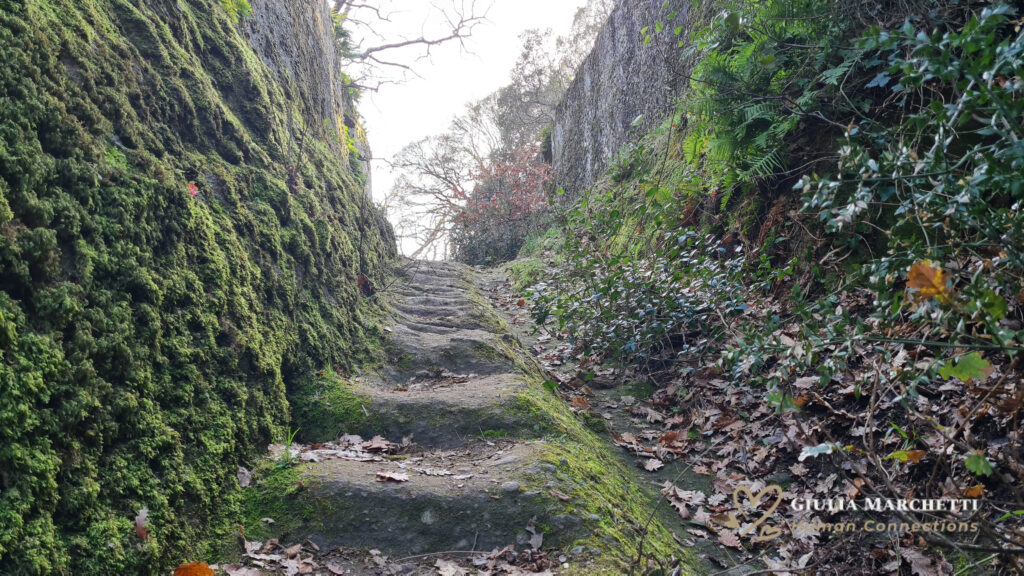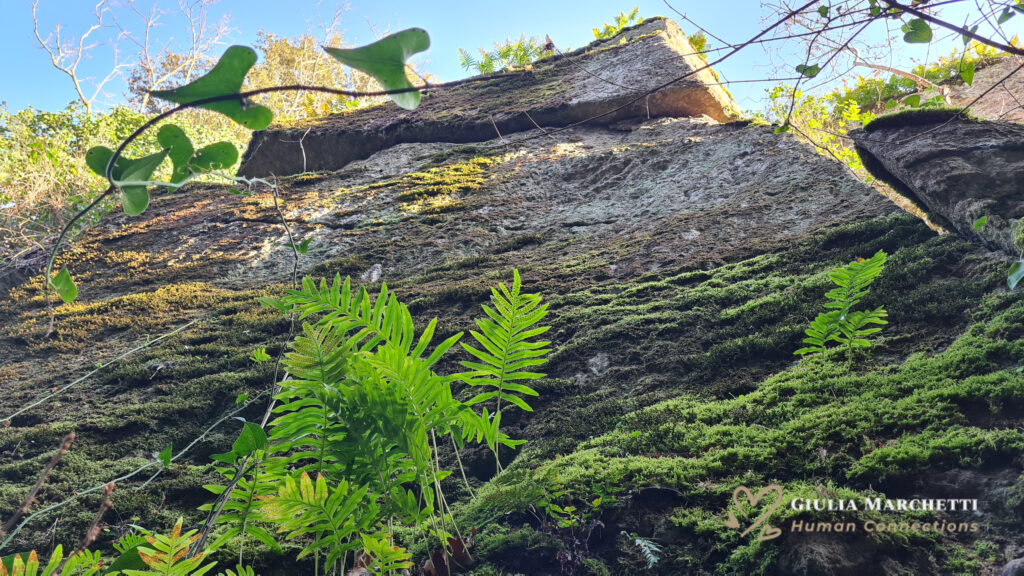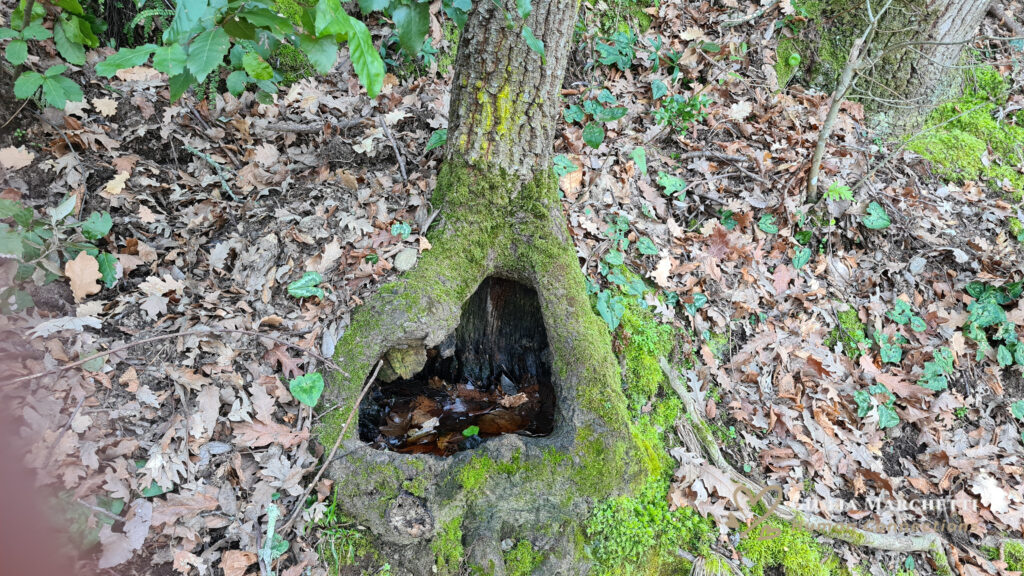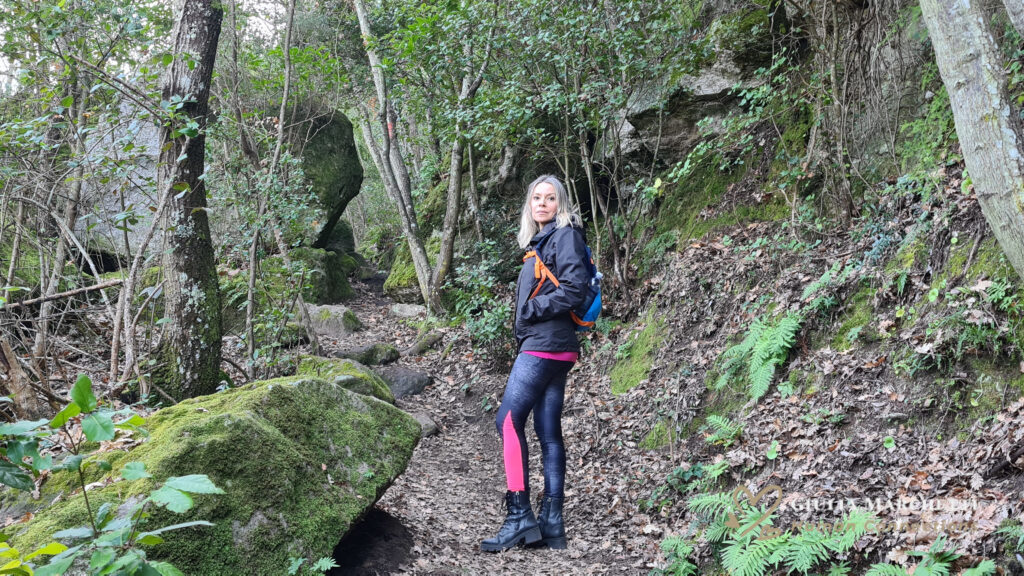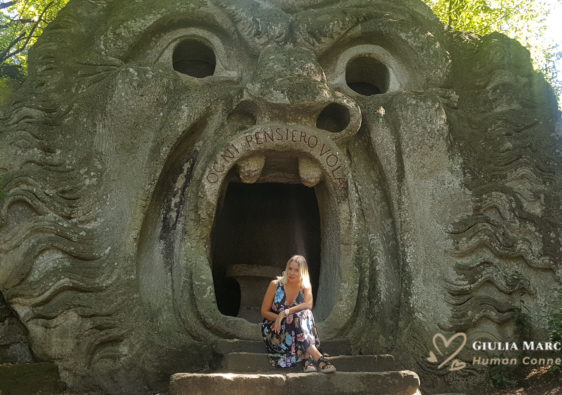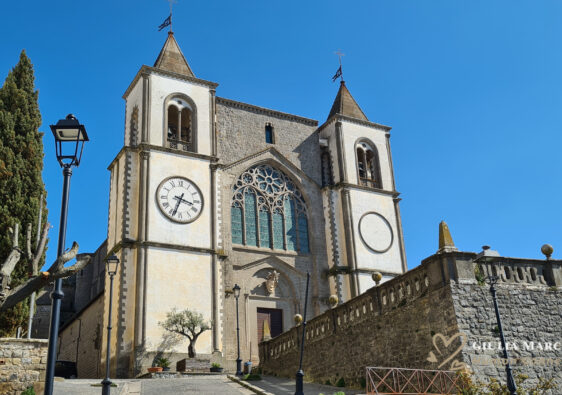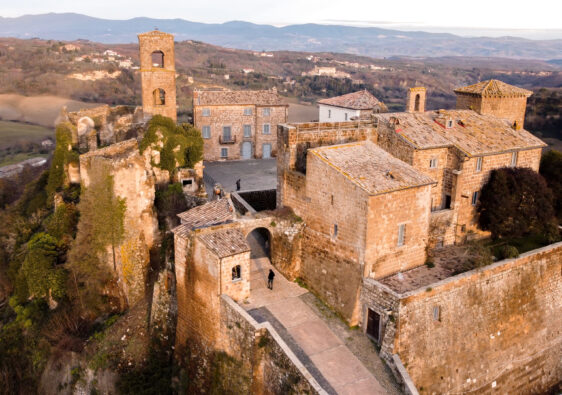The story you don’t expect about the discovery of the Etruscan Pyramid
Salvatore Fosci is a truly extraordinary character. He is an almost mystical figure whom it is easy to come across when you set out in the woods of Bomarzo to discover the Etruscan Pyramid. Everyone knows Salvatore Fosci, who for years has been considered the natural guardian of this huge megalith and of the entire wooded area that surrounds it.
In 2008 he voluntarily worked to clean up this huge boulder from the dense vegetation and roots that had enveloped and swallowed it for centuries. He also worked hard and with machetes to open the path that leads to this suggestive site to the fruition of everyone.
The history of the Etruscan Pyramid does not differ much from many other treasures of the past which, obscured by dense forests and vegetation, are just waiting to be discovered and cleaned up. However, what is unique in this case is that the rebirth of this site is not due to scholars and archaeologists, but to a farmer with a passion for history.
In fact, in the spring of 1991, two local scholars, Giovanni Lamoratta and Giuseppe Maiorano, had already come across this huge boulder with altars and steps, which at first glance resembled the Mayan pyramids discovered in the jungles of Belize and Mexico. But their discovery did not receive the deserved attention and it took another twenty years and Salvatore Fosci’s hard work to return this wonder to the world, attracting the full attention of society and the academic environment.
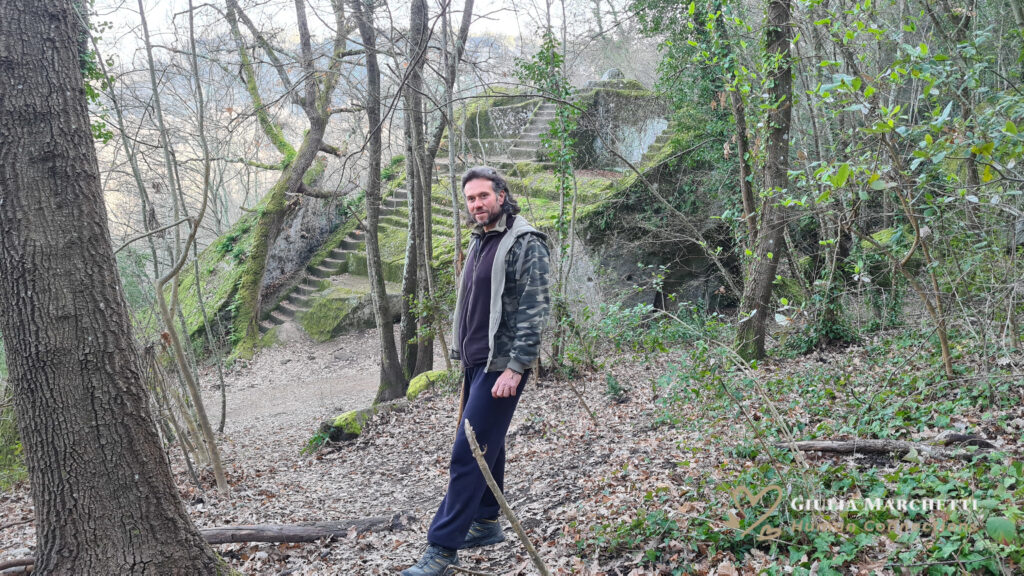
This passionate historian claims to have been inspired by the stories of his grandfather and father who for many years worked in those woods, guarding them with care and respect. They called this pyramid Il Sasso del Predicatore (Preacher’s Rock), or simply Il Sasso con le scale (Rock with stairs), and they did not even remotely imagine its real importance.
Now, arriving at this site one has the perception that this pyramid has returned to history. By focusing on its contemplation, you can live an almost ascetic experience. The vibrations that surround you, signal the presence of our ancestors, whose spirit still wanders among the trees and rocks.
Salvatore Fosci states: “We must approach the pyramid with extreme respect. I too respected it a lot when I cleared it off the dense vegetation. I spent a month and a half of hard work and a lot of sweat, done with humble means and without powered machines because I was afraid of ruining something… The pyramid somehow dominates us, we can only respect it … But today there is little awareness of guarding a sacred monument, in the sense that there are too much chaos and too much noise that ruin this whole atmosphere of sacredness which must instead be respected ”.
In fact, a person does not necessarily have to have religious beliefs to approach this site with silence and respect. This place can be considered sacred because it belonged to our ancestors. They left it to us as an inheritance and we have a duty to respect and preserve it also through silence.
For this wonderful “rediscoverer”, the story of the pyramid is also a bit of a diary of his life in which his father is the predominant figure. In fact, it was the stories of the parent that pushed Salvatore to accomplish this feat, and he did it even a little to regain his origins. Stroking the stone he states: “When you touch this stone, it conveys something important. It conveys the emotions of the past and the connections we have with our ancestors ”.
The Etruscan Pyramid is by now inseparably linked to the figure of Salvatore Fosci. In fact, is hosted in every historical documentary and television program about the pyramid. Though, many may not know that this incredibly unique character is also a talented artist and writer. From his father Salvatore, in fact, also inherited the passion for stone processing, which he also manages to apply onto wood, so much so that he creates wonderful sculptures. Woods, nature, birds, and archaeological sites are his main sources of inspiration, and the park around his home is an open-air exhibition of moai and other works of art.
He is also the author of the book Vulcano Nascosto (Volcano Hidden) and in his biography, we read “A truly singular character, endowed with an extraordinary spirit of observation, an excellent visual memory and a remarkable intuition, deeply integrated into his territorial reality, towards which he nurtures extreme respect and great love. He has the credit for having cleaned up, made perfectly visible, and made known the now-famous Etruscan Pyramid and for having made countless explorations in the woods and in the countryside of Bomazo, discovering and documenting many traces of ancient presences”.
About the Etruscan Pyramid of Bomarzo (Viterbo)
The path leading to the Etruscan Pyramid is surrounded by beech trees that dominate the woods of the Cimini Mountains. You have to go down the via cava, a narrow path dug by the Etruscans and similar to a canyon. All around a triumph of botanical treasures that enrich the vegetation with multiform leaves, colored berries, mosses, and climbing ivy. The oxygen emanating from the trees is intense and the smell is typical of the forest.
When it appears before your eyes is always a wonderful emotion. You need to stop a while to admire it from the right distance to be enchanted by all its extraordinary beauty. It is a breathtaking experience.
Although the name of this ancient boulder suggests the shape of a pyramid, it is actually immediately evident that it is very different from a pyramid. Its particular shape makes it even more unique. For many archaeologists, the Pyramid dates back to the Bronze Age, while other scholars attribute it to the Romans. However, in all likelihood, it was the Etruscans who around the seventh century BC carved this mysterious megalith from a huge boulder of peperino, a gray volcanic rock typical of the Cimini Mountains.
The Etruscans were an ancient civilization that lived in the area corresponding roughly to Tuscany, western Umbria, and northern Lazio. Their civilization dates back to the 8th century BC and was absorbed in 27 BC from the Roman Empire. The Etruscans developed a vibrant artistic and architectural culture that left us an enormous heritage, made up of painted tombs, sarcophagi, sculptures, inscriptions, ceramics, personal ornaments, metal works, chariots, and so on. And it’s nice to think that most likely they also left us this wonderful pyramid which still stands imposing today.
To get an idea of the size and majesty of this pyramid, just think that it measures about 16 meters (53 feet) in length, 7 meters (24 feet) at the widest point, and 9 meters (30 feet) in height. He has 28 steps, two minor altars, and a main one on the rocky summit. The Etruscan Pyramid is one of the wonders of the world, immersed in an archaic and enigmatic site, also considered by some to be esoteric and spiritually magical. Although there is no real evidence that this pyramid was also used for human or animal sacrifices, this is sadly likely, as these rituals were a very common practice throughout the ancient world. The structure of the Pyramid itself, with its channels and cavities, suggests the use of drainage for sacrificial fluids.
More to see:
- Saint Cecilia Necropolis
- Finestraccia (Ugly Window)
- Pasolini’s Tower
- The Park of Monsters
- Bomarzo village
Follow these links The Etruscan Pyramid of Bomarzo
Note:
The Etruscan Pyramid is 19 km from Viterbo and 86 km from Rome
